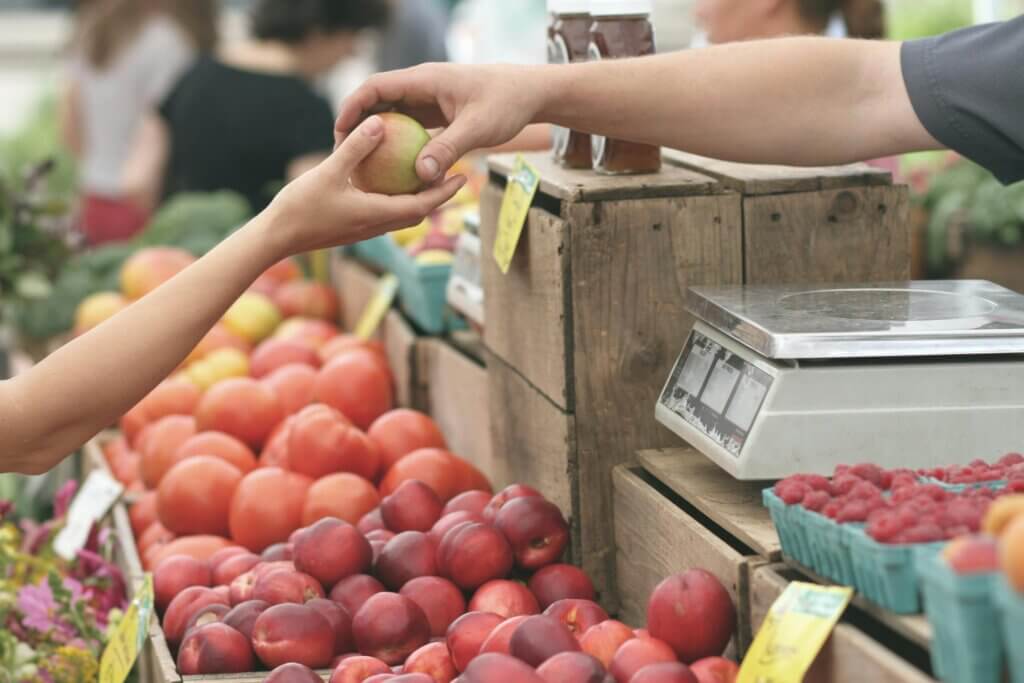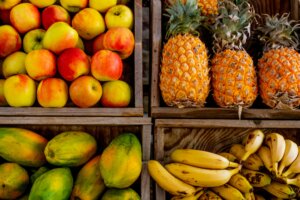When we pick up fruits and vegetables at the grocery store, we usually feel good knowing we’re choosing healthy, nutritious foods. However, many store-bought produce items carry traces of pesticides—chemicals used to protect crops from pests, weeds, and disease.
While these chemicals help farmers grow abundant, good-looking produce, they can also leave behind residues that linger on the foods we bring home. Over time, eating produce with pesticide residues may raise concerns about potential effects on our health.
The good news is that there are simple steps you can take to reduce your exposure to these chemicals, without sacrificing the benefits of fresh produce. In this guide, we’ll go over practical, affordable strategies to help you avoid pesticides in store-bought fruits and vegetables and reduce your toxic load.
Why are pesticides used?
Pesticides help farmers produce large quantities of fruits and vegetables by reducing crop loss due to infestations and diseases. Pesticides also make it possible to grow crops in various climates and conditions, helping to keep produce affordable and available throughout the year. Some pesticides may even extend the shelf life of produce, helping it look fresher on store shelves.
While pesticides play an important role in large-scale farming, they often leave residues on produce. These residues can vary by type, location, and even the farming practices used.
Although regulatory agencies set limits on acceptable pesticide levels, these limits don’t eliminate all residues, and repeated exposure may still be a concern over time.
Why should you avoid pesticides?
Reducing pesticide exposure may help protect your health. Many pesticides are designed to target the nervous systems of insects, and prolonged exposure in humans has been linked to various health concerns.
Some pesticides may act as endocrine disruptors, interfering with hormone balance, and others have been associated with developmental and reproductive issues. Children and pregnant women are especially vulnerable to potential health risks, as even low-level exposure may impact development.
By minimizing pesticide exposure, you can reduce the potential risks associated with long-term consumption of pesticide residues. While it’s nearly impossible to eliminate all exposure, making small adjustments can help ensure your produce is as safe and healthy as possible.
6 ways to reduce or avoid pesticides in store-bought fruits and vegetables
1. Buy organic when possible
One of the simplest ways to reduce your exposure to pesticides is by buying organic produce whenever possible. Organic fruits and vegetables are grown without synthetic pesticides or fertilizers, making them a safer choice.
While organic produce can be more expensive, focusing on the most pesticide-heavy items, often referred to as the “Dirty Dozen,” can help you prioritize. The Dirty Dozen list, updated annually by the Environmental Working Group (EWG), highlights the fruits and vegetables that tend to have the highest pesticide residues.
For example, apples, strawberries, spinach, grapes, and peppers are typically high on the list, so these are best to buy organic when you can.
2. Wash your produce thoroughly
Washing your fruits and vegetables can help remove some pesticide residues, dirt, and bacteria. For best results, use cool water and gently scrub the surface of your produce with your hands.
For firmer fruits and vegetables like apples, cucumbers, and potatoes, using a clean produce brush can help scrub away additional residue. Avoid using soap or harsh chemicals, as they can be absorbed into the produce.
3. Choose local and seasonal produce
Locally grown produce—especially when bought from small or organic farmers—often has lower pesticide levels compared to imported produce. Many local farmers use fewer or milder pesticides, especially if they practice sustainable or organic farming methods.
Plus, buying in-season fruits and vegetables can reduce the need for heavy pesticides because they’re less susceptible to pests when grown in their natural growing season.
Visit farmers’ markets or look for signs indicating that produce was locally sourced for fresher, possibly lower-pesticide options.
4. Peel fruits and vegetables when you can
Peeling can be a quick and effective way to reduce pesticide residues on certain fruits and vegetables. Pesticides are often concentrated in the outer layer or skin, so removing it can help reduce exposure. While you might lose some nutrients that are found close to the peel, it can be worth it for high-residue items like apples, cucumbers, and potatoes.
If you choose to keep the peel on, be sure to wash and scrub thoroughly to remove as much residue as possible.
5. Focus on low-pesticide produce
Some fruits and vegetables naturally retain less pesticide residue than others, even when grown conventionally. These items make up the “Clean Fifteen” list, which includes produce with the least amount of pesticide residues, as reported by the EWG.
For example, avocados, pineapples, onions, sweet corn, and cauliflower typically have lower pesticide residues, so they’re safer to buy conventionally.
If buying organic isn’t feasible for every item on your list, focusing on these lower-residue fruits and veggies can still help reduce your pesticide intake.
6. Grow your own herbs or small vegetables
If you have the space, growing a few herbs or small vegetables at home can be a satisfying way to ensure they’re free from pesticides.
Herbs like basil, mint, and parsley are easy to grow indoors or in small pots, and they’re often sprayed with pesticides when store-bought. Leafy greens, tomatoes, and peppers can also thrive in small garden plots or containers.
Growing even a small amount of your own produce gives you control over what’s used to keep them pest-free, and it can be a fun project that yields fresh ingredients.
Prioritize pesticide-free produce
By buying organic when possible, washing thoroughly, focusing on low-residue options, and even growing a few items at home, you can make small changes that help limit your intake of unwanted chemicals. While it’s nearly impossible to avoid pesticides entirely, these steps can help you feel good about the produce you’re eating and serving to your family.







